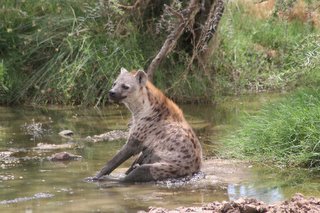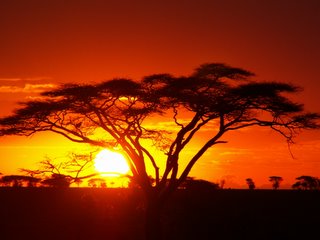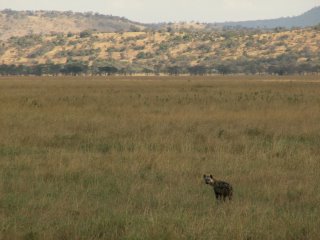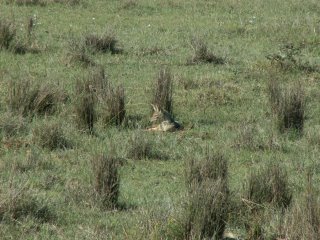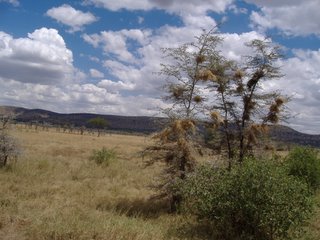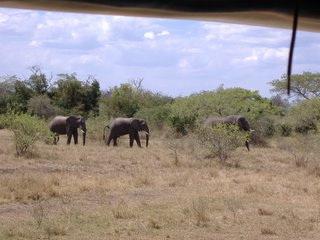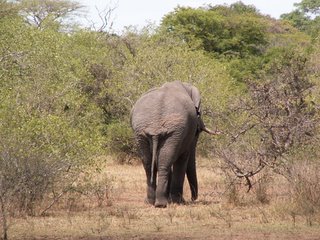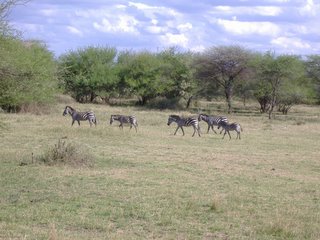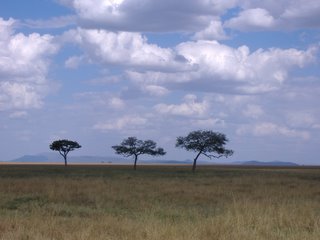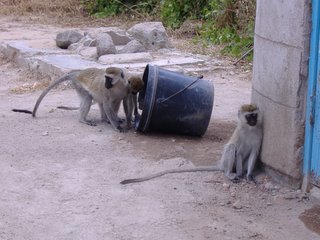Elephants and Hyenas
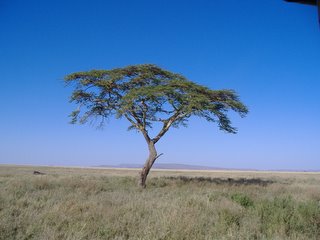

Friday, September 2, 2005
It was perhaps hard to top the excitement of seeing a lion hunt first thing in the morning, but by late morning we had also seen a large herd of elephants moving along the horizon and had 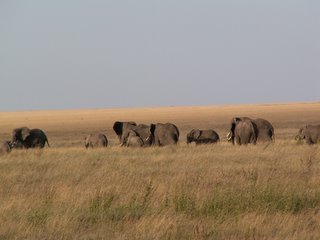 strategically followed a system of the reserve's roads until we were much closer to them.
strategically followed a system of the reserve's roads until we were much closer to them.
There were perhaps thirty or more animals in this group and some were babies!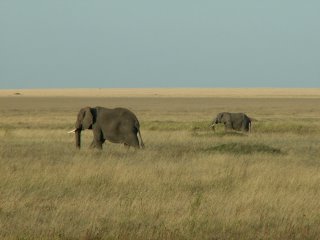 one or two wild elephants is a magical enough sight, but seeing so many together under the sky is inforgettable.
one or two wild elephants is a magical enough sight, but seeing so many together under the sky is inforgettable.
At another place, we saw more elephants grazing among a herd of African buffalo.
We also encountered a pair of hyenas who trotted through the grass right up to our vehicle, sniffed around a bit, crossed the road in front of us, and trotted off into the savanah again. We got a really close look at them.
I was very glad to see hyenas--they are one of the animals I was most interested in. I've seen some really good documentaries on their hunting skills and social lives. They seem to have a bad reputation, but after seeing the real animal close-up many people in our group decided that they had been misguided in their judgement. Perhaps hyenas were not so evil and ugly after all.
They are certainly interesting looking creatures--a bit like a bear and a bit like a d og and a bit like something else with hunched shoulders and spotted coat, big round ears, and a surprisingly-intelligent looking face.
og and a bit like something else with hunched shoulders and spotted coat, big round ears, and a surprisingly-intelligent looking face.
Later, one night around the campfire, Pete told us the African legend about how the gods had made the hyena from the mis-matched parts of different animals. It would explain a lot.
Pete can also do a mean hyena impression. "Once you hear one, you will never forget the sound", he told me.
The first hyena we saw today was sitting in the muddy shallows of a small pool of water, resting on his spotted rump with his hind legs stretched out in front of him. I have seen bears sitting like that. He looked quite comical.
We also saw more bird life this morning, including the cory bustard, which is Africa's heaviest flying bird, and a large speckled bird of prey, which was likely either a thorny eagle or a  Marshall's eagle.
Marshall's eagle.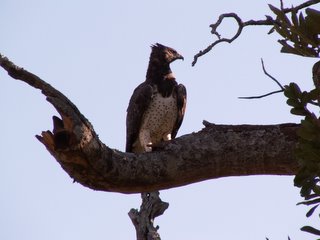
The beauty of the Serengeti landscape is really affecting too.We stopped at one watering hole surrounded by lush fern-like plants. Hippos swam in the water. Storks flew overhead, and baboons sat in the branches of an over-hanging acacia tree. It just struck me as a beautiful scene. It felt like it could be a scene from thousands of years ago, peaceful and wild.


